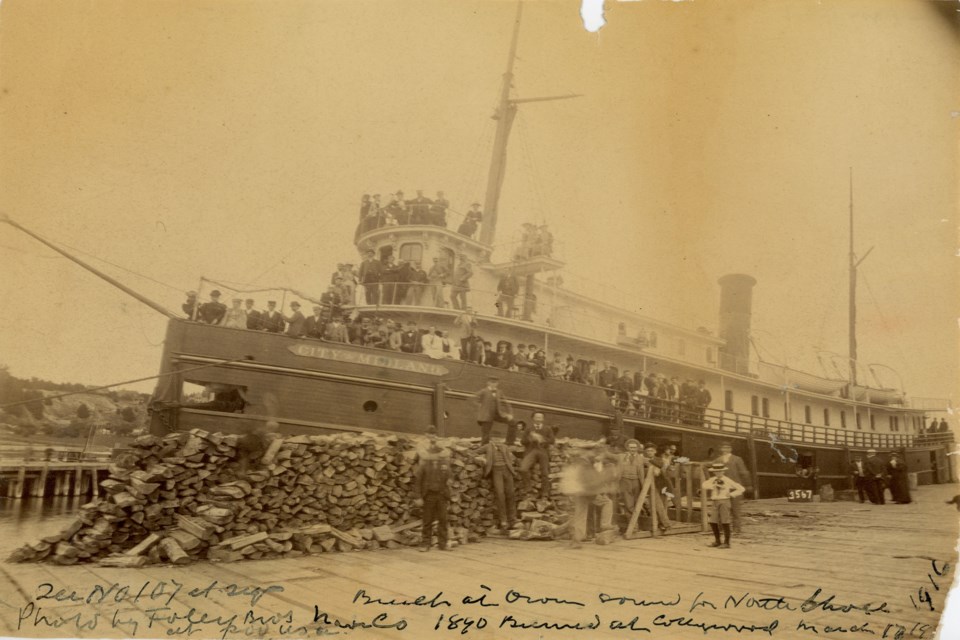The steamer City of Midland was built in Owen Sound in 1890 by John Simpson for the North Shore Navigation Company to service various ports around Georgian Bay, and as far as Sault Ste. Marie.
Today’s Remember This featured photograph is recorded to have been taken in “The Soo,” U.S.A., by Foley Bros. The date is unknown.
The North Shore Navigation Company was a competitor to the Great Northern Transit Company, formed by Collingwood brothers Thomas and John Long as the Georgian Bay Transportation Co. in 1876. The North Shore Navigation Company was nicknamed the “Black Line,” and the “White Line” referred to the Great Northern Transit Company. The colour notations are believed to have referenced the respective colours of the ships’ hulls. Details such as this are extremely helpful when studying black and white photographs as exact colours are difficult to determine.
The City of Midland was a common sight in Collingwood’s harbour between 1890 and 1916. For this reason, she is present in numerous harbour photographs in the Collingwood Museum’s archival collection. The most documented event in her twenty-six-year career was her fiery demise in Collingwood’s snow-covered harbour on March 17, 1916 (see the second photograph). The fire occurred uncomfortably close to the Grand Trunk Grain Terminal and other docked vessels (see the third photograph). On June 12, 1916, the burned-out hull was raised and dismantled for salvage.
If you’re interested in diving into the history of the City of Midland, please contact Collingwood Museum staff.
Remember This is a weekly series of historic photographs submitted by the Collingwood Museum to CollingwoodToday.ca. These photographs were originally collected and documented by the Huron Institute in an historical catalogue entitled Huron Institute Paper and Records: Volume III. Much of Collingwood’s early history has been preserved due to the dedication and foresight of the early museum’s founders, namely its secretary-curator David Williams, upon its establishment in 1904.